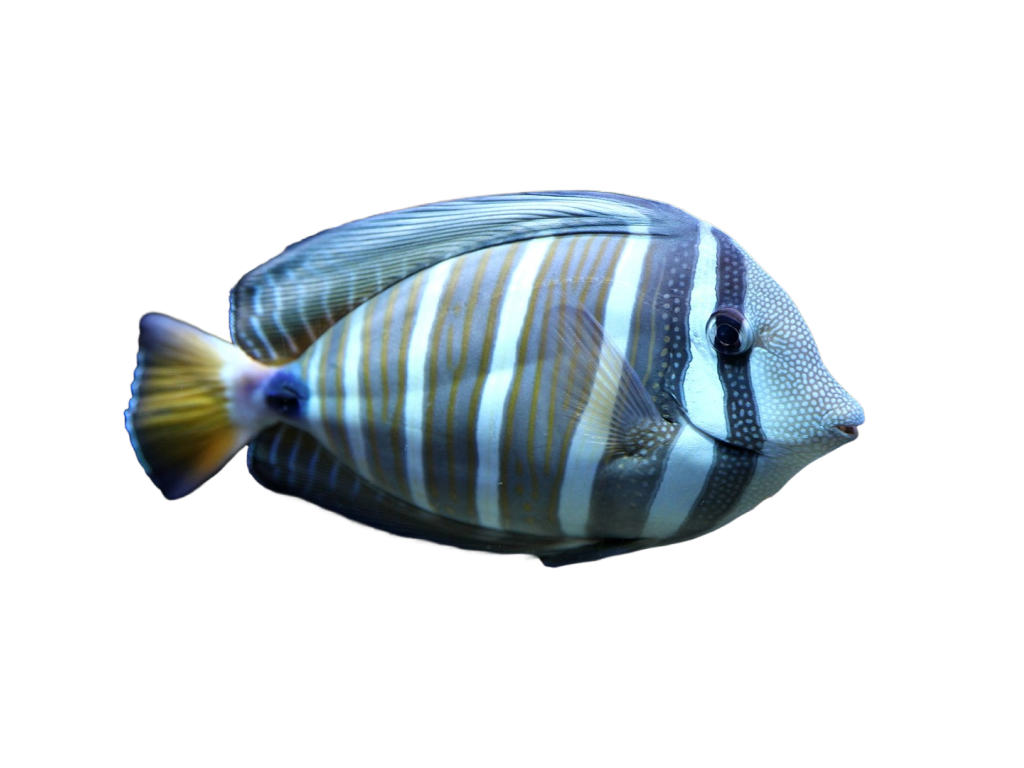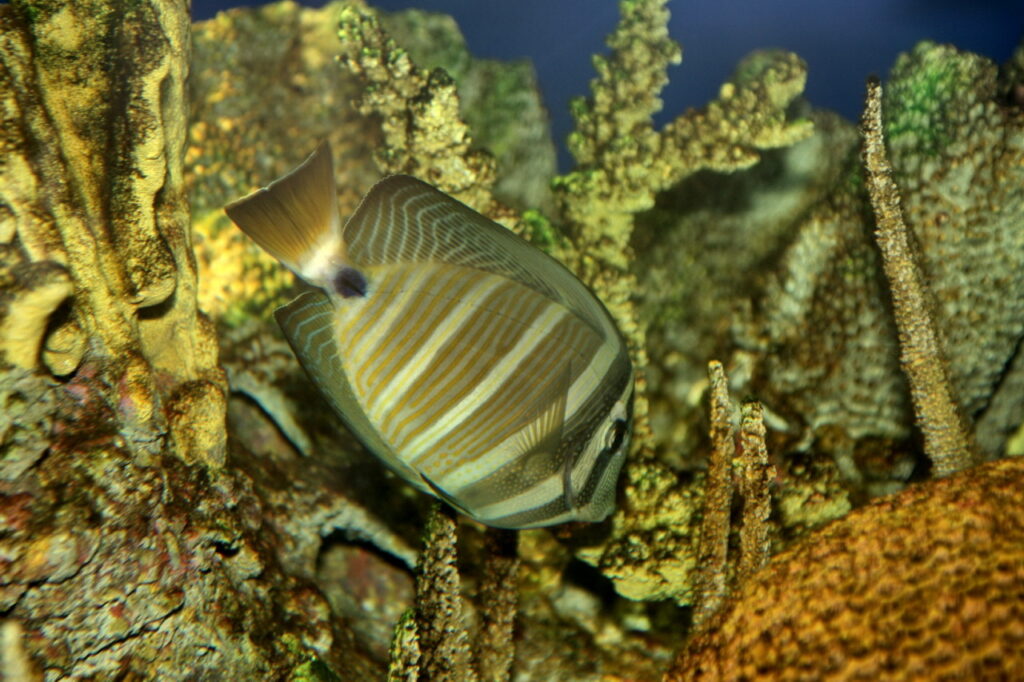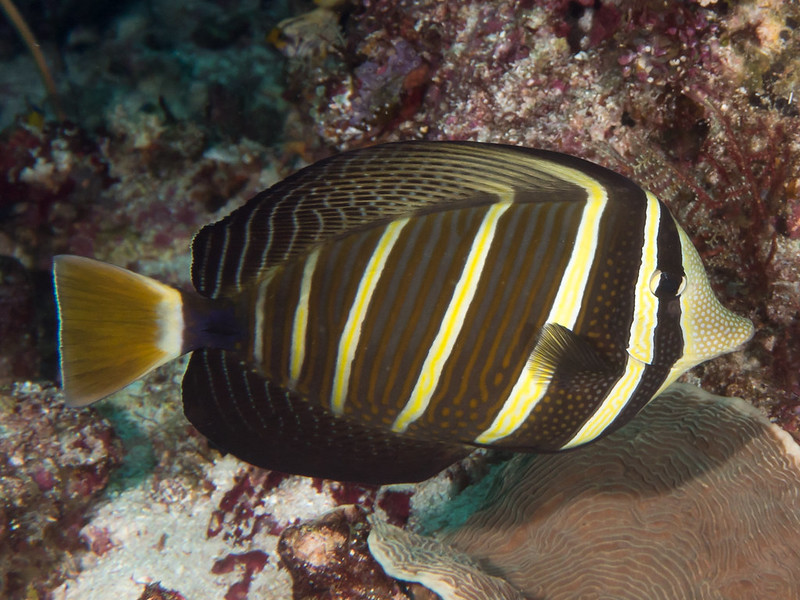Sailfin tang
Zebrasoma veliferum

Sharp, razor-like spike
The sailfin tang lives at depths of 1 to 60 metres in the coral reefs of the sea. It thrives where the water is in constant motion, by waves or currents. The species is one of the largest in the surgeonfish family, and has an enormous dorsal fin. The tail fin of the sailfin tang is transformed into a razor-like cartilage projection or spike, which is used for self-defence. A sting or cut can be fatal to the animal struck by it.

Photo: Cliff-CC-BY
Venomous fry
When it’s time to breed, sailfin tangs gather in shoals consisting of both males and females. Both sexes mate with many different partners. Females lay their eggs freely in the water, and they hatch into larvae after a day. The little fish goes through the stages of egg, larva (fry) and juvenile before becoming an adult fish. The juveniles of sailfin tangs have several venomous fin rays, but the venom disappears as the fish grows into a juvenile. The parents do not care for the offspring.
Sailfin tangs can live both alone and in groups. They are important prey for reef sharks, but use their sharp spikes as protection against attacks. If a sailfin tang becomes stressed, it may change colour to a dark brown.

Photo: Rickard-Zerpe-CC-BY
Distribution worldwide
The Pacific and Indian Oceans, near the equator.

Threat based on the Red List

Trade regulations
CITES: Not listed.